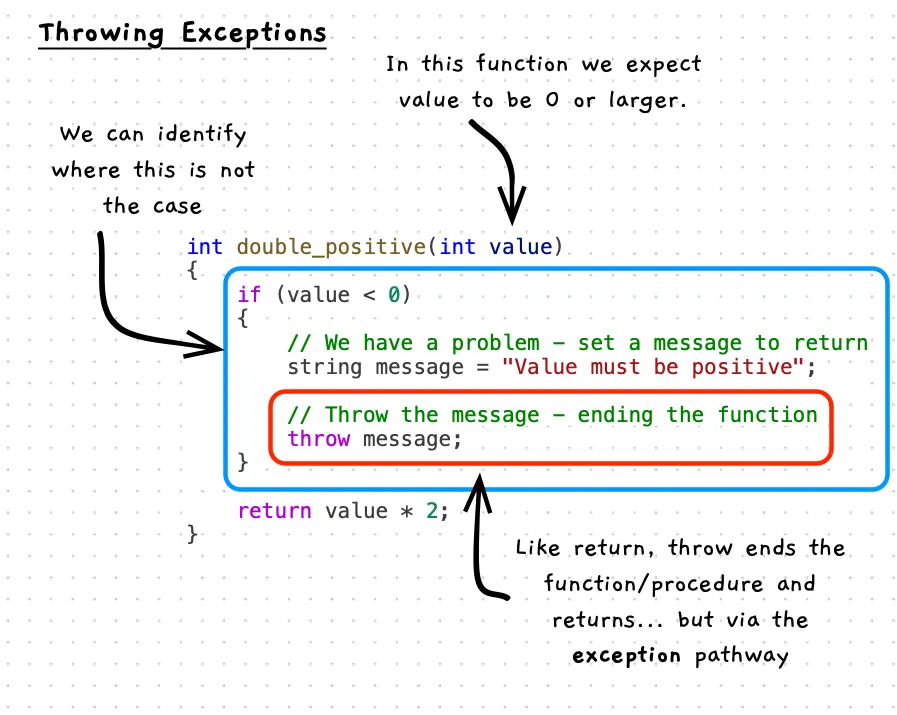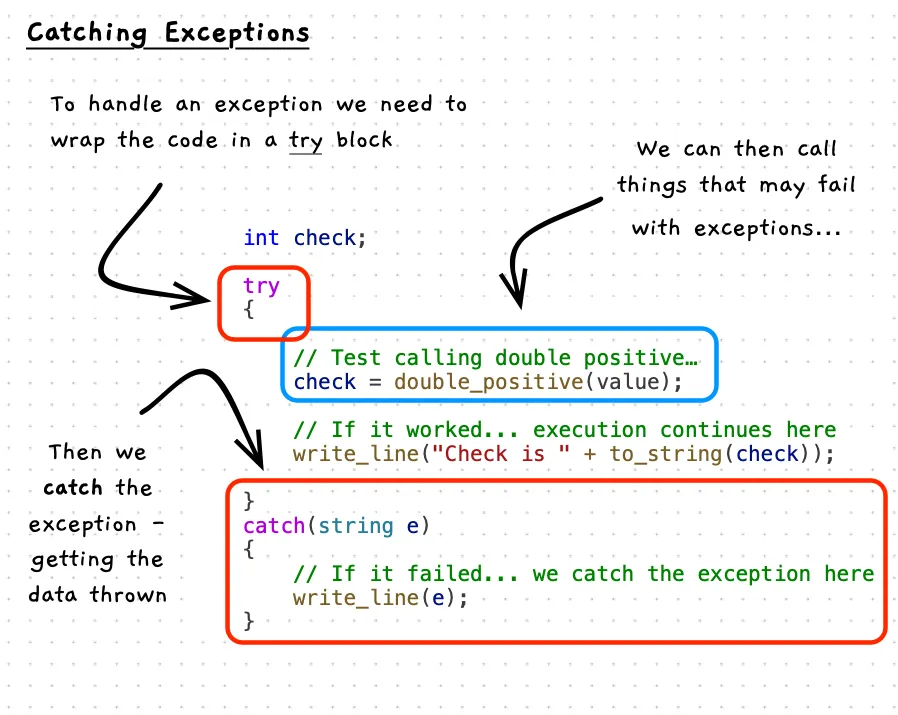Errors and Exceptions
In some cases our function and procedures only work when certain conditions are met. For example, a function that reads from a file may only succeed if the file is available, and accessible. To cater for these cases modern programming languages provide a mechanism called exceptions. This provides an alternate return option out of a function or procedure, but requires some new mechanisms within the calling function/procedure.
Throwing an exception
The following Illustration shows a double_positive function that expects the passed in values to be 0 or larger. In this case, we can check if the value passed in is less than 0 and throw an exception if that is the case. Here we throw a string message, so that the caller can have some context on what went wrong.

Catching an exception
Exceptions have added an alternate exist path from a function, so how can you handle these exceptions in the calling code?
In keeping with the throwing metaphor, the code to handle an exception is called a catch block. In C++, you wrap the code where an exception may be thrown within a try block, which may then be followed by one or more catch blocks to handle different kinds of exceptions. When an exception is thrown within the try block, the alternate return path searches for the matching catch block where execution then continues. Given it must search for a matching catch, exceptions will keep returning from each function until a matching catch is found or there are no calls left to terminate.

Exception propagation
Exceptions require a catch block to provide the point to return to. As a result, if there is not a matching catch block (based on the type of the exception) then the exception must keep ending each function/procedure until it gets back to a point where a matching catch block exists. This process can cause the program to terminate, with the language tools then outputting a message to indicate that the program terminated due to an exception.
Example
This code demonstrates throwing and catching exceptions. The double_positive function requires a positive value to be passed to it. When value is less than 0, the function throws a string exception message. Throwing the exception ends the function, returning to the caller (main in this case) to search for a valid handler (catch block).
#include "splashkit.h"
using std::to_string;
/** * Double the passed in positive value * * @param value a positive integer * @return int double value * @exception string if value is less than 0 */int double_positive(int value){ // Check that value is not negative if (value < 0) { // We have a problem - set a message to return string message = "Value must be positive"; // Throw the message as an exception - ending the function throw message; }
return value * 2;}
int main(){ int check;
try { // Test calling double positive with a positive value check = double_positive(5); // This should succeed, and the doubled value printed write_line("Check is " + to_string(check));
// Test calling double positive with a negative value check = double_positive(-1); // This should fail, so this code will be skipped write_line("Check is " + to_string(check)); } catch(string e) { // Output the error when it occurs. write_line(e); } catch(...) { // Use ... to catch any other exception. write_line("Some other exception occurred"); }
// See what happens when an exception occurs outside of a handler. check = double_positive(-5);
return 0;}When this code is executed you will get the following output on the terminal.
Check is 10Value must be positivelibc++abi: terminating due to uncaught exception of type std::__1::basic_string<char, std::__1::char_traits<char>, std::__1::allocator<char>>